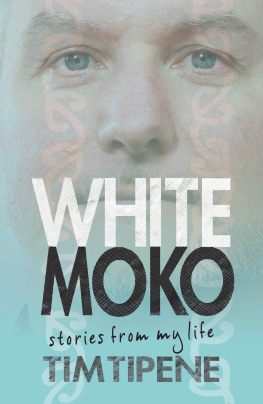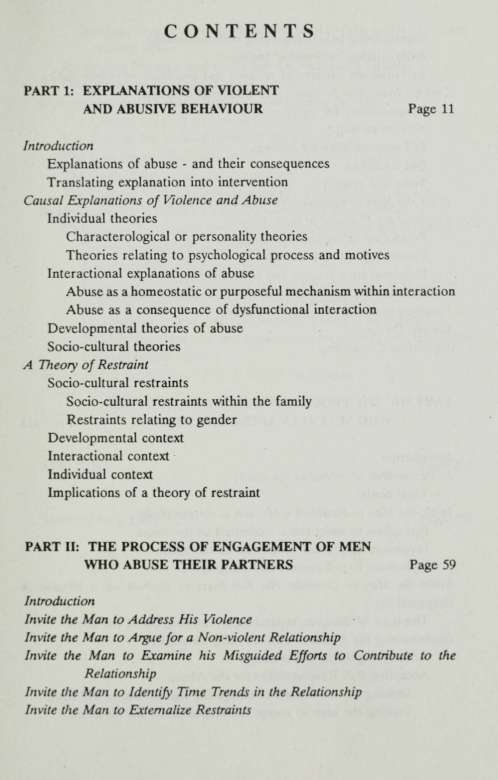This book made available by the Internet Archive.
"... for whatever a man soweth, that shall he also reap."
Galations 6:7
"I'm not, not, not responsible not, not, not responsible I can't answer for the things I do ... (cos I'm so in love with you)"
sung by Helen Shapiro (1963)
"I think it's more to the right," said Piglet nervously. "Wliat do you think. Pooh?"
Pooh looked at his two paws. He knew that one of them was the right, and he knew that when you had decided which one of them was the right, then the other one was the left but he could never remember how to begin. "Well - ", he said slowly.
AA. Milne, 1928 (The House at Pooh Comer)
ACKNOWLEDGEMENTS
I would like to give special thanks to:
Maxine Joy, for her unique loving, supportive and creative contributions to the writing of this book.
Cheryl White for her remarkable organising skills, enthusiasm and encouragement without which this book would never have been published.
Michael Durrant for editorial assistance and especially for his imaginative and tireless efforts in providing me with irresistable invitations to publish my work.
Rob Hall and Penny Roughan whose comments on drafts of the manuscript were extremely valuable and who, as colleagues, have provided me with inspiration and opportunities to develop this work.
Libby Smith, Judy Shepherd and Ann Chua who typed so many drafts of the initial manuscript and were perhaps as relieved as I was to finally complete the task.
Janine Brett and Alison Turner who magically transformed the text and designed the layout.
Michael Lcunig, John Wright and an unknown cartoonist whose sublime drawings say it all.
Many women, men and children who, as clients, cannot be named but who helped me to understand more of the nature of genuine responsibility.
Externalizing beliefs regarding male ownership
Externalizing "oppressive" feelings
Externalizing patterns of reliance and avoidance of responsibility Deliver "Irresistible Invitations" to Challenge Restraints
Responsibility for violence
Non-ownership
Self-responsibility for feelings
Old traditions
Trust and respect Invite the Man to Consider His Readines to Take New Action Facilitate the Planning of New Action
Promoting safety and non-violence
Promoting self-responsibility
Demonstrating respect and non-ownership
Demonstrating responsibility for past abusive behaviour Facilitate the Discovery of New Action Couple Tlierapy Separation Counselling
PART III: THE PROCESS OF ENGAGEMENT OF MEN
VVHO SEXUALLY ABUSE CHILDREN Page 115
Introduction
Invite the Man to Attend to the Abuse
Total denial Invite the Man to Establish a Mission in Responsibility
Invitations to assist those victimized by the abuse
Invitations to prevent recurrence of the abuse
Invitations to self-respect and integrity Invite the Man to Consider His Readiness to Embark on a Mission in Responsibility
The issue of distance/separateness - moving out of the home Implementing the Mission - Part I: Facing the Abuse
Acknowledgement of the Abuse
Accepting Full Responsibility for the Abuse
Inviting the man to acknowledge the significance of his abuse Inviting the man to accept full responsibility for his abuse
Inviting the man to acknowledge the need to take action to prevent further abuse Respecting Distance and Space for the Victim and Others Understanding the Impact of the Abuse Implementing the Mission - Part 2: Contextiializing the Abuse The Context for Parental Incompetence The Context for Social-Emotional "Immaturity" The Context for "Self-esteem" The Context for Sexual Pre-occupation
The Context for Misguided Attempts to Deal With the Abuse Implementing the Mission - Part 3: Demonstrating Responsibility
Challenging Patterns of Avoidance of Responsibility zmd Reliance Demonstrating self-responsibihty Demonstrating other-responsibility
Demonstrating responsibility for the consequences of the abuse Establishing Appropriate and Respectful Boundaries
Establishing appropriate and respectful marital boundaries Establishing respectful and appropriate boundaries with the victim Re-establishing contact Implementing the Mission - Part 4: Preventing Relapse Couple Tlicrapy Conclusion
APPENDIX Page 209
REFERENCE LIST Page 229
PARTI
EXPLANATIONS OF VIOLENT AND ABUSIVE BEHAVIOUR
"The old grey donkey, Eeyore, stood by himself in a thistly comer of the forest, his front feet well apart, his head on one side, and thought about things. Sometimes he thought sadly to himself "WIxy?" and sometimes he thought, "Wlierefore?" and sometimes he thought, "Inasmuch as which?" - and sometime he didn't quite know what he was thinking about. So when Winnie-the-Pooh came stumping along Eeyore was very glad to be able to stop thinking for a little, in order to say "How do you do?" in a gloomy manner to him. "And how are you?" said Winnie-the-Pooh. Eeyore shook his head from side to side. "Not very how," he said. "I don't seem to have felt at all how for a long time. "
A^. Milne (1926) "Winnie-the-Pooh"
INTRODUCTION
Over the past ten years, my colleagues and I have been developing and exploring models for understanding and working with both adolescent and adult male perpetrators of violence and sexual abuse. Our aim has been to develop models of intervention that assist abusive males to cease their abusive behaviour and to relate respectfully to others.
The models are based on the assumption that these goals can best be achieved if the abuse perpetrator accepts full responsibility for his abusive actions. In order to accept responsibility, the perpetrator must acknowledge fully the existence and significamce of the abuse and understand the potential impact of his abusive actions upon the victim and others. He must accept his culpability for his actions and bear the full onus for ceasing his abuse and changing his behaviour.
In the course of this work, I have become particularly interested in the explanations for abusive behaviour, subscribed to by perpetrators, victims and other persons influenced by the abuse. One of the most frequent questions I am asked by cUents and colleagues ahke is, "Why did he do it?"
The search for a causal explanation which is inherent in the question "Why?", is an inevitable characteristic of the Western tradition of empirical science. Within this tradition, a problem is best solved by uncovering and rectifying its true underlying cause. Finding the correct and true causal explanation is seen to be helpful in deciding who or what is to blame for the problem, where to attribute responsibility and what action should be taken to solve it. Perpetrators and others influenced by abuse, tend to become extremely preoccupied with the search for a causal explanation of the perpetrator's behaviour. In fact, many people feel distressed, confused and bewildered if they are unable to explain the cause of a problem.























